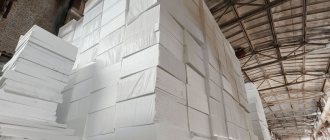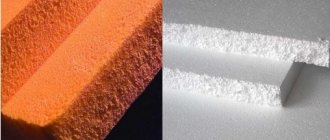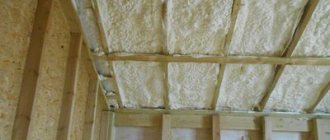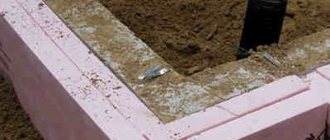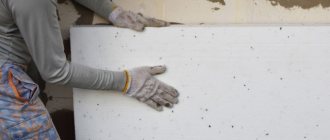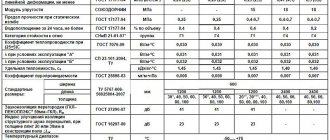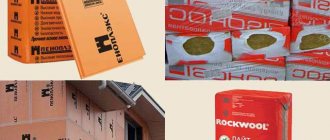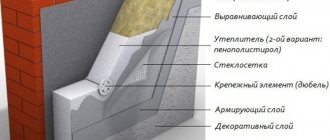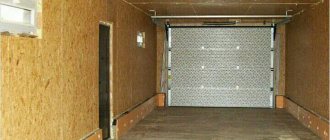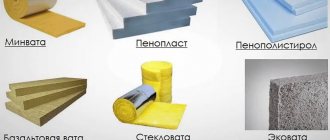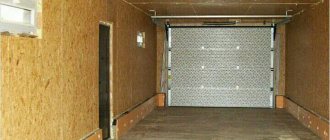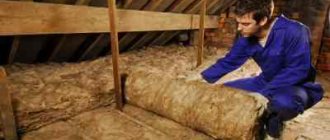If you are deciding which is better - polystyrene foam or polyurethane foam, you should compare the properties of these materials. In addition, you need to take into account operating conditions , because in different rooms it may be preferable to use one or another option. To conduct a full comparative analysis, the following factors are taken into account: structure, service life, strength and thermal insulation characteristics, hygroscopicity, noise absorption efficiency, density and some other parameters. The cost of the product is also important.
Briefly about 2 materials
Expanded polystyrene (EPS) is a gas-filled, closed-porous material based on polystyrene; its cells contain natural or carbon dioxide; there is also a vacuum version. There are 2 types:
- foamed;
- extruded (extruded).
Polyurethane foam (PPU) is a group of gas-filled plastics. The material is based on polyurethane. It can be rigid, elastic and self-foaming. If the characteristics of polyurethane foam and polystyrene foam are considered, you should know that both options are similar in most respects.
Is polyurethane foam (PUF) lighter than extruded polystyrene foam (EPS)?
First of all, one is itching to destroy the legend that insulated vans with filled polyurethane foam (PPU) are lighter than glued vans with extruded polystyrene foam (EPS). Optimal thermal insulation properties of both materials are achieved at a density of 40 kg/m³. Considering that the heat transfer coefficients of PPU and EPPS are approximately equal, differing only by 2 thousandths of W/m²*K, it can be argued that in both glued and jellied sandwiches with the same isothermal properties (for example, 0.7 W/m²*K) the thickness of the insulation the material must be the same. This means that with the same densities of materials, their weight in the vans will be the SAME. We also note that, for example, for a van measuring 5.3x2.6x2.5 m with 12 euro pallets, an increase of 10 mm in insulation thickness will add only 27 kg of weight.
Comparative table of characteristics of polyurethane foam and polyethylene foam
These types of insulation are approximately equally popular, due to their properties. If you are interested in the question of polyurethane foam or polystyrene foam - which is better, it is recommended to compare them according to their main characteristics. The result can be seen in the table:
| Options | Polyurethane foam | Expanded polystyrene |
| Density, kg/m³ | 25-750 | 45-150 |
| Thermal conductivity coefficient, W/(m*K) | 0,019-0,028 | 0,04-0,06 |
| Structure | Closed-cell | Closed |
| Operating temperature, °C | -160…+180 | -100…+60 |
| Environmental friendliness | Polyurethane foam retains its properties and does not emit harmful substances when heated to the maximum value (+180°C). | Expanded polystyrene at a temperature of +60°C begins to release a compound dangerous to human health - phenol. |
| Duration of operation, years | With proper installation, the service life is unlimited, in other cases it is 50 years. | 42278 |
| Fire hazard | Incombustible | More susceptible to combustion. In high temperature conditions, burning areas can become separated, which contributes to the spread of fire. |
| Hygroscopicity | Does not absorb moisture. | It is more susceptible to liquids and is able to partially absorb them. |
| Appearance | Does not lose properties throughout the entire period of operation. | Over time, it shrinks and undergoes deformation due to loss of properties. |
Advantages and disadvantages of polyurethane foam
Polyurethane foam Polyurethane foam is known as ordinary foam rubber. In everyday life we often see soft ones, but in construction we use hard ones. This material has a closed cell structure; the slabs are produced with an edge, which simplifies and reduces the cost of installation. The use of special components makes this material fireproof.
In addition to slabs, it is produced in the form of foam, which is applied to the surface using special equipment. Thanks to the use of foam, “thermal bridges” will be completely absent, and the coating will be continuous.
Please note: polyurethane foam, unlike polystyrene foam and mineral wool, does not require vapor barrier. The water absorption rate is 12-15 times less than that of conventional polystyrene foam.
The main advantages of using polyurethane foam:
- It is unlikely that you can use polyurethane foam on your own for insulation - the equipment is expensive and special protective clothing is required, including a gas mask
- low thermal conductivity coefficient (almost 1.5 times higher than that of foam plastic and almost 2 times higher than mineral wool);
- moisture resistance;
- operating temperature from -70 to +110 degrees;
- 30 years is the designated service life (with proper installation, much longer);
- no deformation during the entire service life;
- resistance - rotting, fungus, moisture does not affect its properties;
- has soundproofing properties;
- environmental friendliness - approved for use even in food warehouses.
Disadvantages of polyurethane foam:
- the price is higher than polystyrene foam;
- low resistance to ultraviolet radiation.
You may be interested in information about whether polyurethane foam is harmful. Read about how to insulate a house with polyurethane.
We also bring to your attention an article on how to insulate walls with polyurethane foam inside and outside.
Comparison by cost
Protecting surfaces with polyurethane foam insulation is a more expensive technology. So, thermal insulation of 1 m² will cost 150-1500 rubles. In this case, the price is formed taking into account the thickness of the material: from 10 to 100 mm. This means that in order to insulate a surface of 1 m² with a 50 mm thick layer of polyurethane foam, you need to prepare about 850 rubles. The high price of this type of thermal insulation is due not only to the production technology of the material, but also to the high cost of the equipment.
If you are deciding which is better - polyurethane foam or polystyrene foam, you should know that the latter option is offered at a lower cost. For comparison, insulating an area of 1 m² with EPS boards will cost several times less - 300 rubles, provided that the thickness is 50 mm. Good polystyrene foam boards, characterized by large dimensions and high density, are more expensive.
Russian and imported extruded polystyrene foam
EPPS EEPS – discord. Previously, we had experience using domestically produced EPS (we deliberately do not indicate the brand). At first glance, it differed from the imported one only in color (imported - blue, domestic EPS - yellow), but upon detailed study it turned out that:
- domestic EPS has unstable quality - from delivery to delivery, the density of the material varied from 35 to 40 kg/m³ (we determined this by weighing each briquette, their weight varied). As a result, the vans lost a fair amount of insulation;
- The sizes of domestic XPS slabs even in one briquette varied (the error in geometric parameters sometimes reached 2 mm). About 25% of the material entering production was written off as scrap. Therefore, we switched to the much more expensive American Styrofoam insulation with minor financial losses.
For what purposes is it better to use?
PPU and PPS have their own advantages over each other; for this reason, in some conditions it is preferable to use one or another insulation option. For example, it is better to use PPU if the following tasks arise:
- it is necessary to create effective wind protection;
- it is necessary to realize the requirement of high adhesion;
- creation of a seamless thermal insulation structure;
- short installation time.
When polyurethane foam and polystyrene foam are considered, the comparison is made not only in terms of parameters, but also in terms of operating conditions. For example, if you plan to use EPS, it is necessary to ensure high-quality moisture protection, which is facilitated by film materials. Expanded polystyrene and structurally similar analogues (foam plastic) need to create conditions in which the risk of fire will be low.
Advantages of EPPS
Advantages of EPPS Styrofoam, currently used by us:
| Durable thermal insulation (consistency of performance over a long period of time is an important factor for passing the second ATP test) |
| High mechanical strength (compression, tearing, bending, shear). Allows you to absorb high dynamic loads caused by wind and vibration. |
| High moisture and vapor barrier characteristics (important factors affecting durability) |
| Chemical resistance |
| Good adhesion |
| Lightness (sufficient strength is achieved with a lower material density) |
| Dimensional stability (consistency of slab geometry) |
A couple of reviews about EPPS
Leonid, 35 years old, Omsk: Used polystyrene foam to insulate the walls of a residential dacha. The house is small and heated in winter, so there were no problems with the appearance of moisture inside the insulating “pie”. I carry out repairs every 5-7 years, which means that during this time the insulation will not have time to sag and lose its qualities.
Vitaly, 45 years old, Khabarovsk: Expanded polystyrene does not weigh down the structure and retains heat well, so I chose this material. I heard that it is flammable, but the house uses a minimal amount of fire-hazardous coatings, for the most part concrete, brick, plastic, and metal are used everywhere.
Which insulation is stronger?
Eps Styrofoam or PPU? First, let's make an analogy. Polyurethane foam and polypropylene foam are also used in other industries. Thus, cushions for seats, sofas and armchairs are made from polyurethane foam with the addition of special additives, and XPS is used by the US Army and NASA. Draw your own conclusions.
The strength of EPS is confirmed by the following tests:
The Royal Aeronautical Institute (Stockholm, Sweden) conducted tests to measure the long-term fatigue strength of Styrofoam Dow XPS and PU foam with a density of 40 kg/m³. Method – cyclic (5 Hz) deflection tests under prevailing shear stress, increasing with each cycle. Tests have shown that a panel with EPS has a tremendous advantage over a panel with PPU.
What to choose
Unfortunately, there is no ideal material that will suit absolutely everyone. For some, it will not be suitable due to the high price of polyurethane foam; for others, the service life of polystyrene foam will not suit them. Therefore, weigh all the pros and cons, but keep in mind that the disadvantages are not complete contraindications for use. Knowing the properties of insulation, you can make the best choice and not regret later about the money spent.
For example, if you want to insulate a garage or a wooden house on your property, choose cheaper polystyrene foam. 10-15 years of foam service life will be quite enough for this type of building. If funds allow, purchase extruded polystyrene foam. Just remember that ultraviolet rays destroy foam.
If you want to improve the thermal insulation of your home or apartment for many years, it would be wise to choose polyurethane foam. The costs will be higher, but you will enjoy the benefits of insulating your home for many years to come. The higher costs of quality installation will pay off over time.
Read about the technology of wall insulation with polystyrene foam here.
For an overview of the advantages and disadvantages of polystyrene foam, watch the video:
Polyurethane foam or polystyrene foam: which is better to choose for insulation?
Recently, many have been thinking about insulating their homes.
Some insulate the entire house, while others only insulate the balcony, but everyone is faced with the question of choosing the material for the work. There are expensive and cheap insulation materials, which ones are best? The comparative ease of installation and reasonable price leads us to two main materials - polyurethane foam and polystyrene foam. Both are types of foam and each has its own advantages and disadvantages. Which is better - polystyrene foam or polyurethane foam?
Installation features
The installation method is exactly what distinguishes polystyrene foam in panels from polyurethane foam. Polyurethane foam is most often sprayed in the form of a monolithic coating that has no joints and does not require serious preparation. Familiarize yourself with the technology of spraying polyurethane foam, insulation with this material does not require much time, since there is no additional installation work.
Advice from a pro There are two main types of exterior wall finishing insulated with polyurethane foam - siding and plaster. Each method has its own subtleties of applying polyurethane foam, which are important to know in advance for proper preparation of surfaces and subsequent finishing.
Mineral wool
Service life is 50 years for some manufacturers, a good indicator. Thermal conductivity is 0.032 - 0.12, this is the coldest insulation of those compared. Moisture resistance is low, warm air passes through well. During installation, there is a problem associated with protecting the installer from fine dust, which causes irritation to the skin and respiratory system.
For walls you need one type of mineral wool, for the ceiling another, for partitions a third.
Additional protection of mineral wool is required in the form of a vapor barrier device, counter-lattice, all this increases the cost of installation and the time it takes to put the facility into operation. The price is the lowest per square meter.
Remember, the stingy pays twice, first for the mineral wool, then for its dismantling and spraying of polyurethane foam.
During operation, shrinkage and changes in the size of the insulation are possible. It is possible for small particles of mineral wool to enter the living space, which causes allergies and skin irritation. No wonder people in Udmurtia are dismantling old mineral wool and switching to polyurethane foam.
In the photo of a house insulated with mineral wool, on the attic roof you can clearly see how the snow melts from heat leaks through the insulation. This can be clearly seen with a thermal imager.
Summary
If you plan to purchase polystyrene foam or polyurethane foam, you must take into account that in terms of the main parameters the second option wins. It is non-flammable, has a high density, wear-resistant, lasts a long time, and is non-hygroscopic. Expanded polystyrene is cheaper, but at the same time it has a fairly low thermal conductivity, which is often also an important criterion when choosing.
If self-foaming polyurethane foam is considered, its installation requires the use of expensive equipment. However, it is not advisable to purchase such equipment for one-time use. It must be said that polyurethane foam and polystyrene foam are universal insulation materials, but you should choose the appropriate option based on operating conditions.
